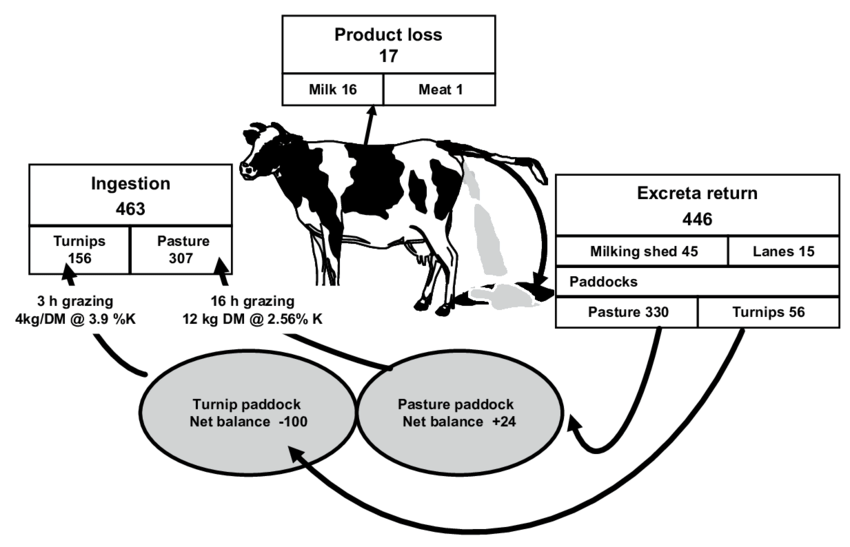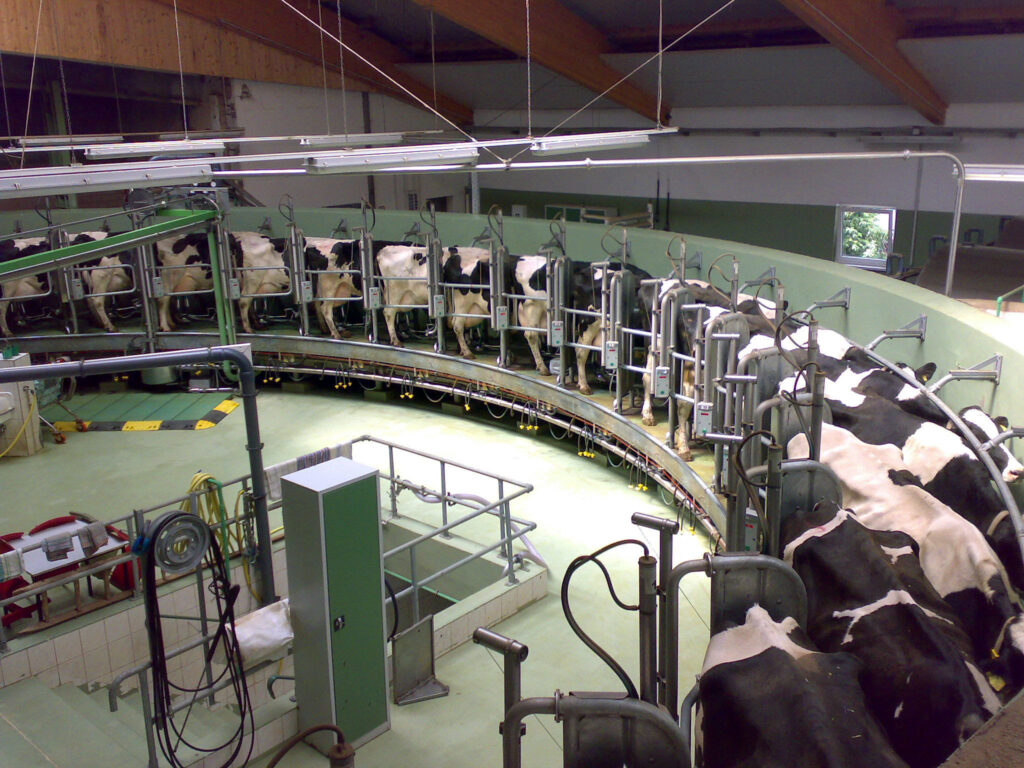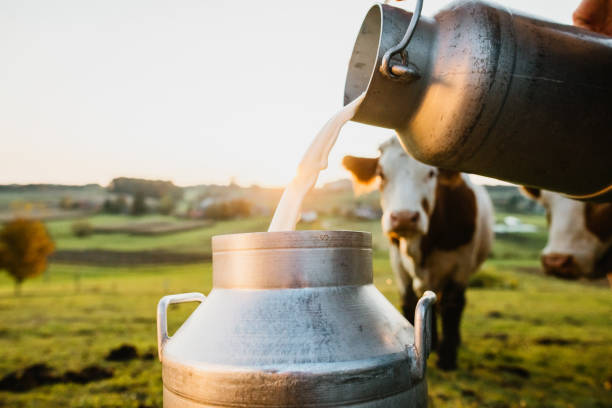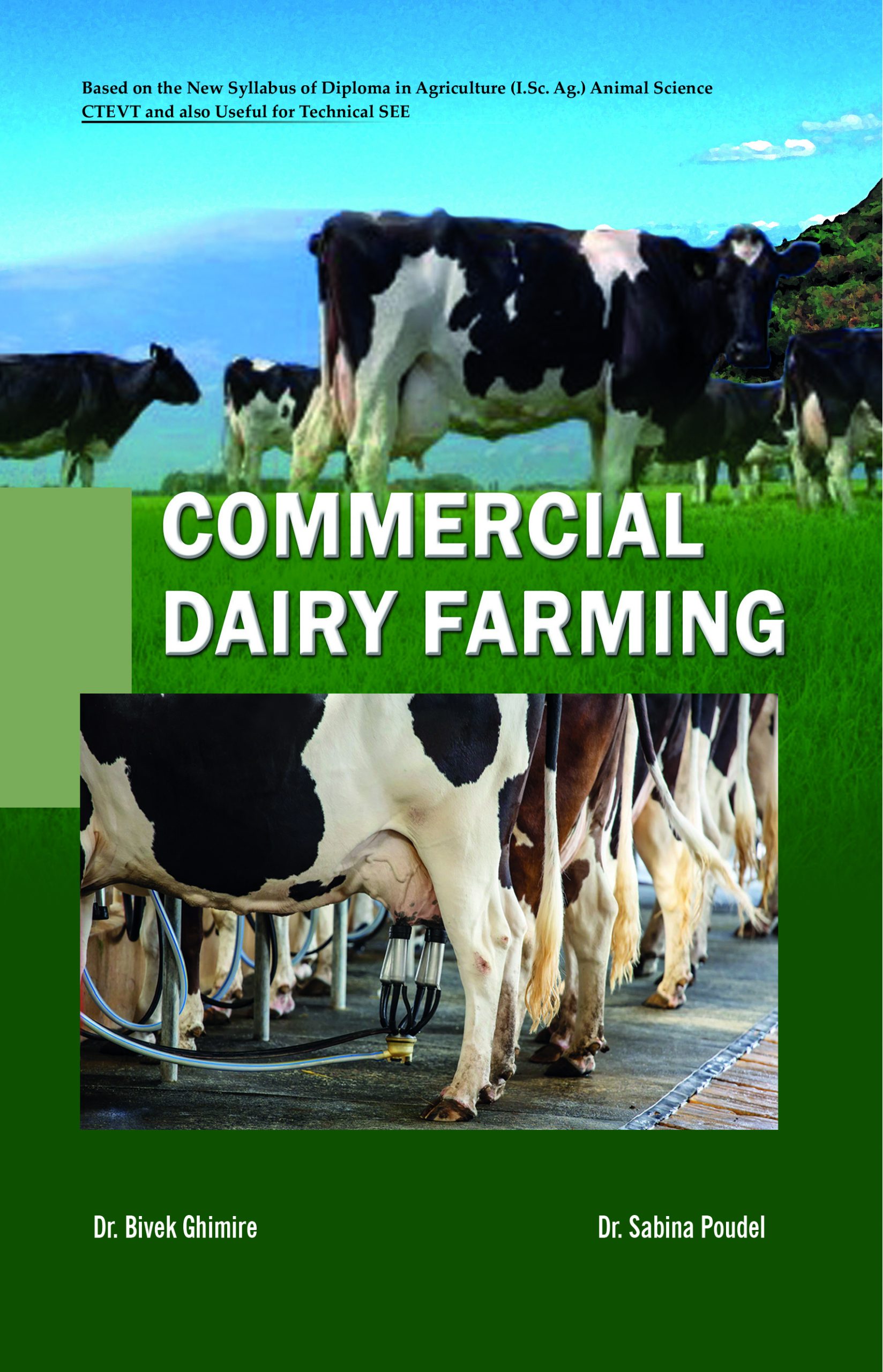Future of Commercial Dairy Farming Milk
Introduction to Commercial Dairy Farming
Commercial dairy farming represents a fundamental shift from traditional milk production methods to large-scale, profit-driven agricultural enterprises. Unlike subsistence farming where milk is primarily produced for family consumption, commercial dairy farming focuses on maximizing output for market sale and distribution through sophisticated operations that leverage advanced technologies, specialized equipment, and professional management practices. This approach to dairy production has become increasingly important in global food systems, supplying the growing demand for dairy products while contributing significantly to regional and national economies through job creation, revenue generation, and infrastructure development .
The transformation of dairy farming from small family operations to commercial enterprises has occurred over several decades, driven by population growth, urbanization, and changing consumer preferences. Today’s commercial dairy farms are characterized by their scale, efficiency, and integration into complex supply chains that distribute products locally and internationally. The evolution of commercial dairy farming practices continues to shape the agricultural landscape, balancing productivity demands with increasing concerns about environmental sustainability, animal welfare, and economic viability .

Key Characteristics of Commercial Dairy Operations
Commercial dairy farming distinguishes itself from traditional approaches through several defining features that emphasize scale, technology, and market orientation:
- Large-Scale Production: Commercial dairy operations typically maintain hundreds to thousands of animals, achieving economies of scale that smaller farms cannot match. For instance, a case study of Ideal Dairy Farms revealed their expansion from 1,230 cows to 2,300 cows, resulting in doubled production to 22,000 gallons of milk daily . This scale allows for optimized resource allocation and lower per-unit production costs.
- Capital-Intensive Operations: Establishing and maintaining a commercial dairy requires substantial financial investment in land, infrastructure, machinery, and livestock. Modern commercial dairies utilize sophisticated equipment including milking parlors, cooling tanks, pasteurizers, feeding systems, and waste management facilities, with investments often reaching millions of dollars .
- Advanced Technology and Mechanization: Commercial dairy farms employ cutting-edge technologies to maximize efficiency and productivity. These include automated milking systems, electronic health monitoring for animals, computerized feeding programs, and environmental control systems. For example, modern milking machines can reduce labor requirements while ensuring consistent milking procedures, handling 5-7 minutes per cow compared to 15-20 minutes with manual methods .
- Market Integration: Unlike subsistence operations, commercial dairy farms are deeply integrated into local, regional, and global supply chains. Their production is destined for mainstream markets, processing facilities, and export channels, making them responsive to consumer preferences and price signals across diverse markets .
Table: Comparison Between Subsistence and Commercial Dairy Farming
| Aspect | Subsistence Dairy Farming | Commercial Dairy Farming |
|---|---|---|
| Primary Objective | Family consumption | Profit generation |
| Herd Size | 2-5 animals | Hundreds to thousands of animals |
| Technology Level | Traditional methods | Advanced technology and mechanization |
| Production Volume | Limited to household needs | High volume (thousands of gallons daily) |
| Market Involvement | Minimal surplus for local sale | Fully integrated into supply chains |
| Labor Source | Family members | Hired specialized workers |
Global Trends and Economic Importance
The global dairy sector is experiencing significant transformation, with commercial farming playing an increasingly important role in meeting worldwide demand. According to projections, world milk production is expected to grow at 1.8% annually through 2034, reaching approximately 1,146 million tonnes by 2034. This growth is primarily driven by yield improvements rather than herd expansion, highlighting the efficiency focus of modern commercial operations .
Regional production patterns reveal interesting dynamics in commercial dairy farming. Asia, particularly India and Pakistan, accounts for more than half of the anticipated global production growth. India has solidified its position as the world’s largest milk producer, with production increasing by approximately 5% in 2023 despite challenges such as lumpy skin disease outbreaks and sporadic droughts . Meanwhile, traditional exporting regions like the European Union are experiencing stagnating production due to environmental regulations and cost pressures, with their surplus expected to shrink from 114% in 2023 to 111% by 2030 .
The economic impact of commercial dairy farming extends far beyond the farm gate. These operations create numerous jobs across various sectors, from direct employment in animal care and milking operations to processing, distribution, and retail positions. Commercial dairies also generate substantial revenue through milk sales and contribute to local economies through infrastructure development and tax revenues. In the United States alone, dairy farms—largely family-owned and managed—operate in all 50 states, with significant concentration in western and northern regions .
Global trade patterns reflect the specialized nature of commercial dairy production, with only a small share of milk traded internationally, primarily in processed forms. The export market remains highly concentrated, with New Zealand, the European Union, and the United States collectively projected to account for nearly 70% of global milk exports through 2034 . This concentration creates both opportunities and vulnerabilities in global supply chains, as demonstrated during recent disruptions like the COVID-19 pandemic and geopolitical conflicts .
Operations and Technology in Modern Dairies
Modern commercial dairy farming relies on sophisticated equipment and management practices to ensure efficiency, product quality, and animal welfare:
Milking and Processing Equipment
- Milking Machines: Automated systems that reduce labor requirements and ensure hygienic milk extraction. Portable machines can milk a cow in 5-7 minutes, with high-quality systems costing between $1,500-$2,500 for smaller operations .
- Pasteurizers: Essential for food safety, these units eliminate harmful bacteria through heat treatment, with prices ranging from $500 to $5,000 depending on capacity .
- Cooling Tanks: Stainless steel storage systems that preserve milk quality, with 100-gallon tanks priced around $4,000 and 220-gallon cooling tanks approximately $7,300 .
- Separators and Homogenizers: Equipment that separates cream from milk and creates consistent texture, costing $600-$3,000 for small-scale units .

Animal Management Systems
Commercial dairies implement comprehensive animal management programs that optimize health, nutrition, and productivity. These include:
- Precision Feeding Systems: Computer-controlled formulations that deliver customized rations based on production stage, weight, and health status.
- Health Monitoring Technology: Electronic sensors that track activity, rumination, and physiological indicators to detect health issues early.
- Environmental Controls: Automated ventilation, cooling, and bedding systems that maintain comfort and reduce stress, important for maintaining production levels. As noted in the Ideal Dairy case study, “Keeping cows cool and comfortable in the summer is important for maintaining milk production” .
Waste Management Solutions
Large-scale dairy operations implement sophisticated waste management systems that convert manure into valuable byproducts:
- Anaerobic Digesters: Capture methane emissions for energy production
- Nutrient Separation Systems: Create solid fertilizer and treated water
- Composting Operations: Transform waste into soil amendments for agricultural use
Table: Essential Equipment for Commercial Dairy Operations
| Equipment Type | Primary Function | Cost Range | Importance Level |
|---|---|---|---|
| Milking Machines | Automated milk extraction | $1,500-$2,500 | Critical |
| Pasteurizers | Pathogen elimination | $500-$5,000 | Critical for market sales |
| Cooling Tanks | Milk preservation | $2,000-$7,300 | Critical |
| Feed Mixers | Ration preparation | $3,000+ | High |
| Manure Management | Waste handling | Varies widely | High |
| Health Monitoring | Animal care | Varies widely | Moderate to High |
Economic Aspects and Market Dynamics
Commercial dairy farming operates within a complex economic framework influenced by input costs, market prices, policy interventions, and consumer demands. The economic viability of these operations depends on efficiently managing the relationship between milk revenues and production costs, particularly feed expenses which typically represent 45-60% of total operating costs.
The U.S. Department of Agriculture provides regular analysis of dairy markets through its Economic Research Service, tracking supply, demand, trade, and prices for milk and dairy products . Their data reveals several important trends affecting commercial dairy economics, including:
- Declining Fluid Milk Consumption: U.S. per capita fluid milk consumption has been trending downward for more than 70 years and fell at a faster rate during the 2010s than in each of the previous six decades . This has shifted commercial production emphasis toward processed dairy products and ingredients.
- Global Price Volatility: Dairy commodity prices experienced significant fluctuations in recent years. The IFCN World Milk Price Indicator fell by approximately 25% in 2023 compared to 2022’s record highs, but stabilized above $40/100kg (approximately 18.1$/cwt)—significantly higher than historical lows seen in previous market cycles .
- Production Cost Pressures: Dairy farmers worldwide faced profitability challenges in 2023 as lower milk prices coincided with elevated feed and energy costs, squeezing operating margins .
Government policies significantly influence commercial dairy economics. In the United States, the Federal Dairy Margin Coverage (DMC) program compensates producers when the difference between milk prices and feed costs drops below selected coverage levels . Similar risk management tools exist in other major dairy producing countries, helping to stabilize farm incomes during market disruptions.
International trade plays an increasingly important role in commercial dairy economics. However, global dairy trade remains highly concentrated, with approximately 80% of countries not self-sufficient in milk and reliant on imports from surplus-producing nations . This creates inherent vulnerabilities in the global supply chain, as disruptions in major exporting regions can quickly translate into shortages and price spikes in importing countries.
Challenges and Sustainability Considerations
Commercial dairy farming faces several significant challenges that threaten its sustainability and social license to operate:
Environmental Impacts
Dairy production accounts for a substantial share of agricultural greenhouse gas emissions, primarily through methane from enteric fermentation and manure management. The industry faces increasing pressure to reduce its environmental footprint through improved management practices and technological innovations. The International Dairy Federation has developed a common carbon footprint approach to help the global dairy sector calculate emissions and apply new technologies for reduction .
Other environmental concerns include:
- Water Usage: Large-scale water requirements for animals, cleaning, and feed production
- Nutrient Management: Balancing manure application with crop nutrient needs to prevent water pollution
- Land Use Change: Impacts associated with feed production expansion
Animal Welfare Concerns
As operations scale up, commercial dairies face increased scrutiny regarding animal living conditions, handling practices, and health management. Successful operations implement comprehensive welfare programs that address:
- Stocking Densities: Providing adequate space for rest, feeding, and movement
- Health Protocols: Preventive care and prompt treatment of illness
- Handling Practices: Low-stress techniques during movement and procedures
Economic Pressures
The capital-intensive nature of commercial dairy farming creates significant financial risks, especially during periods of price volatility or production challenges. Many operations struggle with:
- High Debt Levels: Associated with expansion and technology investments
- Labor Availability: Finding skilled workers for specialized roles
- Succession Planning: Transferring complex operations to next-generation owners
Changing Consumer Preferences
Commercial dairies must respond to evolving consumer demands regarding:
- Alternative Products: Plant-based dairy replacements increasing their market share
- Production Attributes: Interest in organic, grass-fed, and other specialty products
- Transparency: Desire for information about farming practices and animal care
Despite these challenges, commercial dairy farming continues to adapt through technological innovation, management refinement, and market diversification. The sector’s ability to address these concerns will determine its long-term sustainability and social acceptance.
The Future of Commercial Dairy Farming
The trajectory of commercial dairy farming points toward continued evolution in response to technological possibilities, market demands, and sustainability imperatives. Several key trends will shape the industry’s development through 2034 and beyond:
Technology Integration
Advanced technologies will further transform dairy operations through:
- Precision Dairy Farming: Sensors, data analytics, and automation will optimize individual animal management, potentially increasing productivity while reducing resource use.
- Robotic Systems: Fully automated milking, feeding, and cleaning systems will reduce labor requirements while improving consistency.
- Genetic Advancements: Improved breeding techniques will enhance production efficiency, disease resistance, and adaptability to changing conditions.
Market Adaptation
Commercial dairies will need to respond to shifting demand patterns including:
- Value-Added Products: Growth in specialty cheeses, fermented products, and nutritional formulations
- Plant-Based Competition: Continued competition from alternatives, requiring either diversification or emphasis on dairy’s unique attributes
- Global Demand Growth: Particularly in Asia and Africa, where income and population growth drive increased consumption
Sustainability Transition
Environmental considerations will drive operational changes:
- Emission Reduction Technologies: Adoption of feed additives, manure management practices, and energy efficiency measures to reduce climate impacts
- Circular Economy Approaches: Integration of waste-to-energy systems, nutrient recycling, and byproduct utilization
- Water Conservation: Improved efficiency through recycling and reduced consumption
The OECD-FAO Agricultural Outlook 2025-2034 projects that most production growth will continue to come from yield improvements rather than herd expansion, reflecting the intensification of production practices . However, regional differences will persist, with major producing countries like India and Pakistan experiencing growth from both more animals and yield increases, while North America and Europe will rely almost exclusively on yield improvements.
Conclusion
Commercial dairy farming represents a critical component of global food systems, balancing scale production with evolving challenges and opportunities. As the sector continues to develop, its success will depend on effectively integrating technological innovations, addressing sustainability concerns, and maintaining economic viability despite market volatilities.
The future of commercial dairy farming lies in its ability to adapt to changing circumstances while maintaining its essential purpose: producing nutritious dairy products efficiently and responsibly. By embracing innovation, responding to consumer preferences, and addressing environmental impacts, the sector can continue to provide economic opportunities while meeting global demand for dairy products.
As we look toward 2034 and beyond, commercial dairy farming will undoubtedly continue to evolve, reflecting the dynamic interaction between technology, markets, and sustainability considerations that has characterized its development to date.

External Resources for Further Information
- International Dairy Federation: Global organization representing the dairy sector, with information on sustainability, nutrition, and standards.
https://fil-idf.org/ - USDA Economic Research Service – Dairy: Regular reports and data on U.S. and global dairy markets, policy analysis, and economic trends.
https://www.ers.usda.gov/topics/animal-products/dairy/ - OECD-FAO Agricultural Outlook 2025-2034: Detailed projections for global dairy markets through 2034, including production, consumption, and trade trends.
https://www.oecd.org/agriculture/oecd-fao-agricultural-outlook/ - Dairy Farmers of America: Farmer-owned cooperative providing resources on sustainable dairy farming practices and market information.
https://www.dfamilk.com/ - https://sjxsm.shop/the-uk-dairy-industry-in-2025-growthmarkets/
- Global Dairy Platform: Industry organization focused on responsible dairy production, with research on nutrition and sustainability.
https://www.globaldairyplatform.com/

